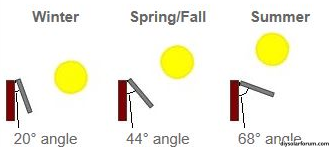It struck me this afternoon as I sit with full batteries (before noon!) and hardly any loads (cool weather has cut back any A/C needs and my hot water tank is up to heat) that it has been months since my AIO's have had to transfer to AC Bypass to power anything. AC in does not do anything anymore. Having good battery capacity to carry me through most days and more than sufficient PV panel watts to charge said batteries leaves the grid as emergency backup to the loads wired to my AIO's.
So it makes me think about how necessary is having grid as backup? While true I still use the grid for high outdoor temperature A/C loads during overnight and also for those few items that are 240vAC (I only run 120vAC AIO's) a lot of the time now I am not using any grid at all.
Something to contemplate in the future about maintaining a grid connection is the monthly minimum cost (about $25 all said and done with taxes and surcharges) or ramping up some more solar and batteries (perhaps installing one of the nifty 240/120VAC 10kW AIO's that some folks are reviewing in other Threads) or simply keeping a gas generator for emergency purposes.
Is keeping the grid as emergency backup worthwhile? Interesting beautiful Sunny day musings.
So it makes me think about how necessary is having grid as backup? While true I still use the grid for high outdoor temperature A/C loads during overnight and also for those few items that are 240vAC (I only run 120vAC AIO's) a lot of the time now I am not using any grid at all.
Something to contemplate in the future about maintaining a grid connection is the monthly minimum cost (about $25 all said and done with taxes and surcharges) or ramping up some more solar and batteries (perhaps installing one of the nifty 240/120VAC 10kW AIO's that some folks are reviewing in other Threads) or simply keeping a gas generator for emergency purposes.
Is keeping the grid as emergency backup worthwhile? Interesting beautiful Sunny day musings.




